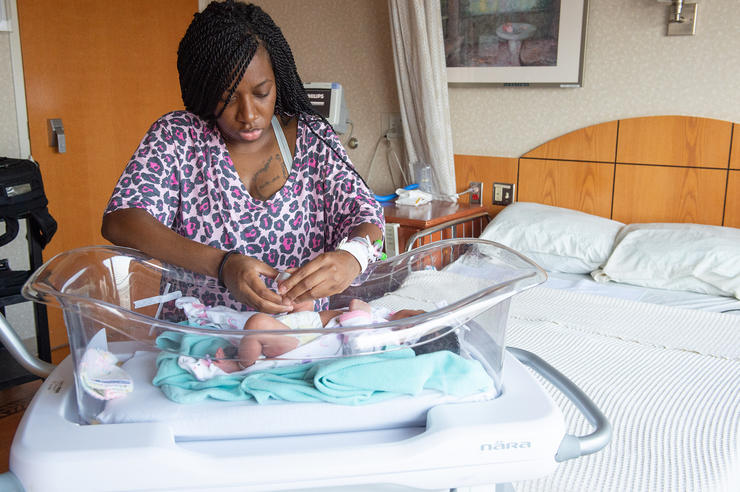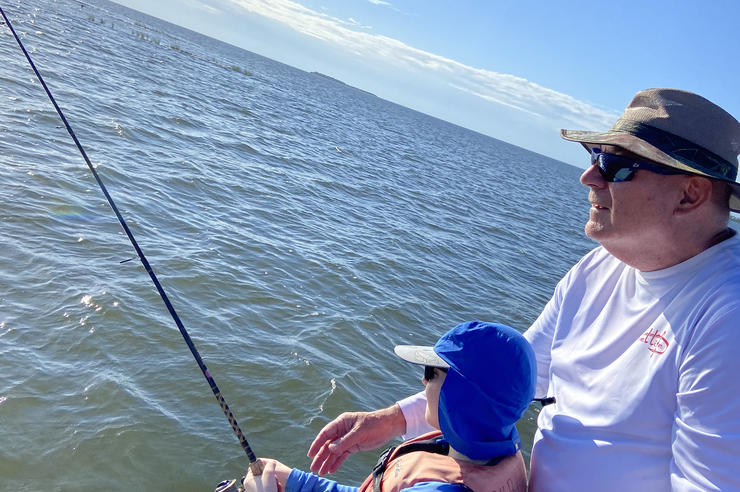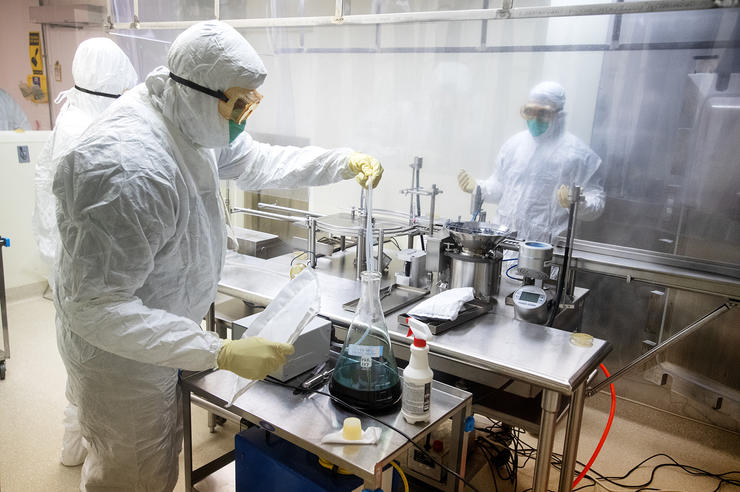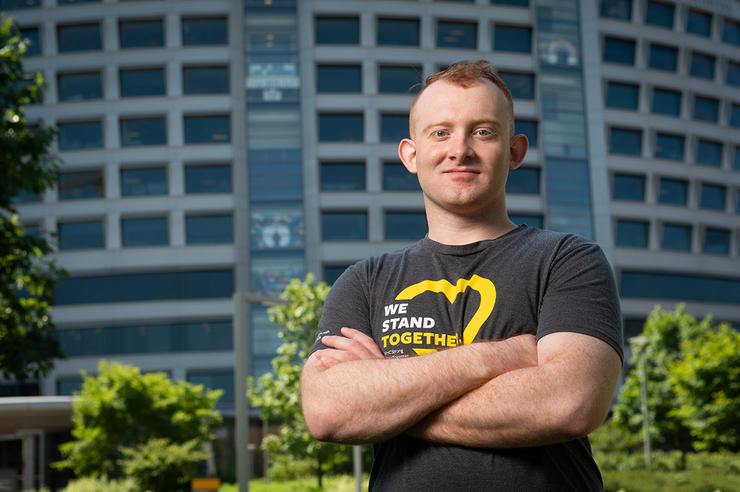Tendon transfer offers new hope
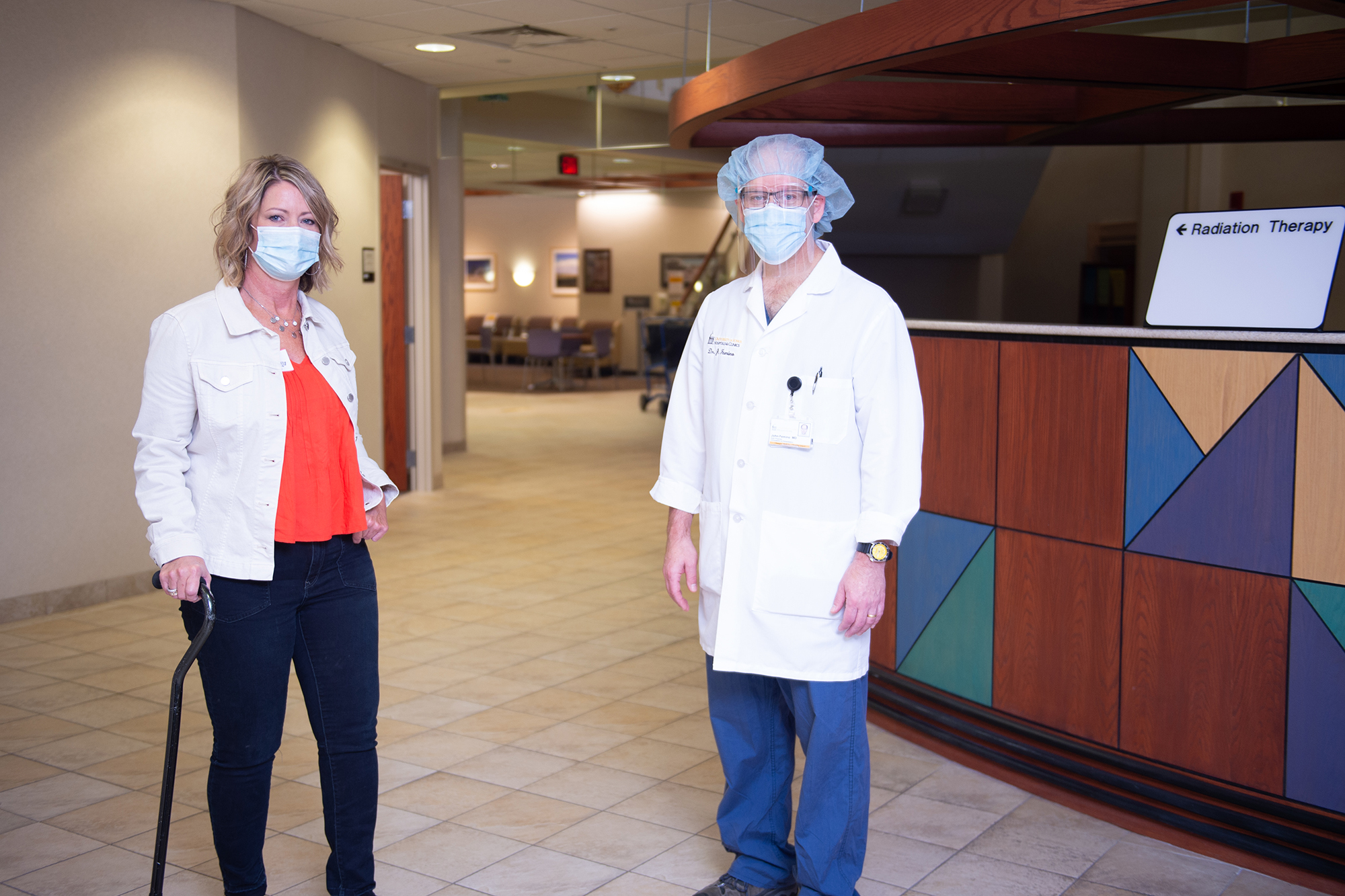
Lisa Rathjen of Wapello, Iowa, stands with UI orthopedic surgeon John Femino, MD, at University of Iowa Hospitals & Clinics. Femino performed a tendon transfer to rebalance Rathjen’s left foot.
After she finished running a hill workout on May 2, 2017, Lisa Rathjen felt tired but strong. At age 51, the Wapello, Iowa, woman was on track to meet her goal of competing in her first seven-mile run that summer.
The next day, Rathjen had a stroke.
During the months of rehabilitation that followed, Rathjen learned to walk again as she overcame partial paralysis. But even after all that progress, Rathjen had another challenge.
Nerve damage from the stroke made some of her muscles weak and caused her foot to curl inward. She couldn’t stand or walk without wearing a leg brace. She wanted to free herself from that brace.
In 2019, orthopedic surgeon John Femino, MD, a foot and ankle specialist at University of Iowa Hospitals & Clinics, performed a tendon transfer to rebalance her foot, redirecting Rathjen’s healthy muscles to replace her weak damaged muscles.
Four months later, Rathjen cried when she took her first steps without the brace.
“Dr. Femino’s surgery gave me back some of what I lost,” Rathjen says. “I’m no longer completely dependent on a brace to stand and walk. There are no words for that gift.”
A life turned upside down
Rathjen was healthy and active before the stroke. For six years, she had participated in the annual Quad-City Times Bix7, a seven-mile running and walking race through downtown Davenport.
She started as a walker, but she had a goal in mind: Each year, Rathjen pushed herself to run more of the course than she had the year before.
“The year 2017 was the year I planned to run the whole way,” she says.
“Dr. Femino’s surgery gave me back some of what I lost. I’m no longer completely dependent on a brace to stand and walk. There are no words for that gift.”
The stroke changed her plans drastically in an instant. But Rathjen continued to look forward, shifting her focus to reclaiming the normal life that had been stolen away from her.
That began with five weeks of intensive rehabilitation in the hospital. When she returned home, she made getting better her full-time job.
The stroke had paralyzed the left side of her body, resulting in weakness and spasticity in her left arm, hand, and foot. The spasticity caused her muscles to become stiff, curl in, and resist movement.
Rathjen relied on the brace to secure her foot. But life with the brace meant dealing with a painful callus that developed on the side of the foot. She also had to buy two sizes of shoes to have one big enough to fit her deformed foot.
“I couldn’t do anything without the brace,” Rathjen says. “I was afraid if there were ever a fire, I would never get my brace on fast enough to get out.”
Along with therapy, Rathjen included research in her rehabilitation, hunting for solutions other people were using to address the problems caused by spasticity after a stroke.
Rathjen watched videos of people who’d had a tendon transfer to correct conditions similar to hers and decided to find out whether tendon transfer could work for her. She turned to her UI neurologist, Kaustubh Limaye, MD, for help.
“I started bugging him about tendon transfer right away,” Rathjen says.
Limaye recommended Femino highly, but he also advised Rathjen to wait until she had completed the therapy necessary to restore function to her left side, which could take up to two years. She followed his guidance, and in 2019 Limaye determined that Rathjen was ready and referred her to Femino.

“I wanted to stay local with UI Hospitals & Clinics,” Rathjen says. “Once I met Dr. Femino, I felt very comfortable about my choice.”
Choosing the right approach
Stroke often causes some tendons on the inside and outside of the foot to weaken while others become spastic. That creates an imbalance and leads to a deformity of the foot.
Tendon transfer requires an expert assessment of the patient’s condition so that the surgeon knows which procedures to use.
“There’s a menu of procedures to choose from,” Femino says. “You have to figure out what muscles need to be released or transferred and what ones are weak. Then you have to decide what combination of procedures will work best to give you a balanced foot someone can walk on.”
The surgery went as Femino planned, freeing Lisa from the brace and giving her a long list of ways her life improved.
“My foot sits flat and isn’t deformed, so my balance is better,” she says. “I don’t have to deal with a painful callus. I can walk on grass, walk barefoot around the house, and wear regular shoes. It’s a miracle, truly.”
Looking for a foot and ankle expert? Consider UI Health Care Orthopedics.
